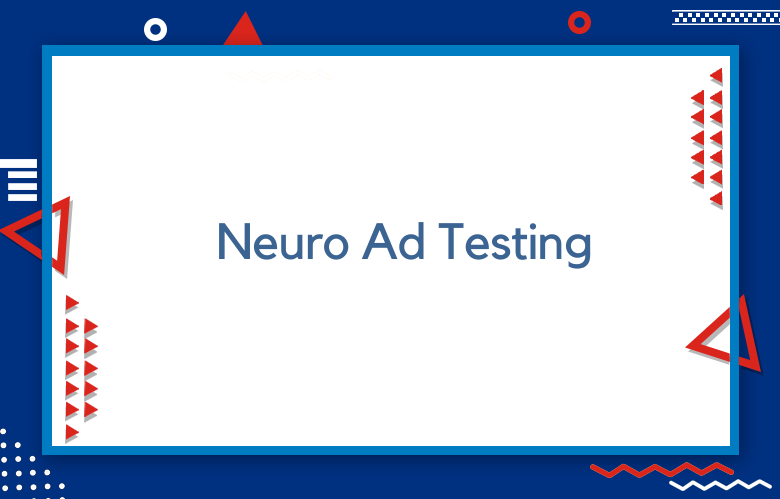Neuro Ad Testing: How It’s Changing the Way We Understand Ads

Ever wonder how ads get inside your head? Neuro-ad testing is a powerful way to see how our brains react to ads, helping advertisers create content that really sticks. It’s all about measuring brain activity and physiological responses to determine what grabs your attention and what you remember. Let’s break it down and see how it all works.
Fundamentals of Neuro Ad Testing
At its core, neuro-ad testing is about understanding how our brain responds to ads. It helps advertisers see what’s working and what isn’t. The key? Tapping into how our brains process information.
Understanding Neurophysiology
Neurophysiology is a fancy way of saying, “What’s happening in the brain?” When we watch an ad, different parts of our brains light up, and scientists can track that activity to understand how we’re reacting. Pretty cool, right?
Monitoring Brain Activity
Want to know how advertisers can tell which part of an ad caught your eye? They look at the brain’s electrical signals. By monitoring brain activity, they can determine which parts of the ad were memorable or emotionally charged.
Cognitive Responses
Cognitive responses are how we process and interpret the information we see. Things like, “Did this ad grab my attention? Will I remember it later?” These responses are crucial in figuring out how effective an ad is.
Measuring the Effectiveness of Ads
How do you know if an ad works? Two big things advertisers look at are how engaged people are and if they remember the brand.
Advertising Effectiveness: Understanding the Metrics
Consumer Engagement
An ad has to grab attention, right? Engaged viewers are likelier to remember and act on what they’ve seen. Neuroscientific tools help find the moments in ads that keep people hooked.
Brand Recall
Brand recall is about whether people remember a brand after seeing the ad. Neuro-ad testing helps pinpoint what helps (or hurts) that memory.
Measurement Techniques in Neuro Ad Testing
How Do They Measure All This?
There are some high-tech ways to measure brain activity and how we respond to ads. Here’s a look at the most common methods.
Electroencephalography (EEG): Tracking Brainwaves
Electroencephalography (EEG) is used to measure electrical activity in the brain. It sounds complex, but it’s basically about tracking brainwaves to see how we react to an ad.
Event-Related Potentials (ERPs)
These are brainwave patterns that appear when we see something, like an ad. They can show when we’re paying attention or feeling something.
Steady-State Visually Evoked Potentials (SSVEPs)
These help measure how long we focus on certain parts of an ad. It’s like tracking how long someone stares at a logo.
Functional Magnetic Resonance Imaging (fMRI): Looking Inside the Brain
Functional Magnetic Resonance Imaging (fMRI) measures blood flow in the brain, showing which areas are active. It gives deeper insights into emotions, focus, and decision-making.
Hemodynamic Response
This shows how blood is directed to active areas in the brain. In ads, it helps track what parts we focus on.
Neural Correlates of Attention
These areas of the brain are responsible for attention. Advertisers use this to make sure their ads are keeping you focused.
Eye Tracking
Ever wonder what your eyes are doing when you look at an ad? Eye tracking shows where people are looking and how long they’re focused.
Gaze Patterns
This is the path your eyes take when you look at an ad. Advertisers can see which elements (like a brand logo) draw the most attention.
Visual Saliency
This tells advertisers which parts of an ad stand out most to viewers.
Digging into the Data
Once all the data is collected, advertisers analyze it to determine how people respond emotionally and mentally to an ad.
Data Analysis in Neuro Ad Testing
Neural Signatures
Neural signatures are specific patterns of brain activity linked to emotional or memory reactions. These help advertisers understand the psychological impact of their ads.
Emotional Arousal
Ads that make us feel something are likelier to stick with us. Measuring emotional arousal shows how strongly an ad affects us emotionally.
Memory Encoding
This tells advertisers whether the ad will be remembered after it’s over. It’s all about how well the ad gets stored in our brains.
Predictive Modeling
Using all this brain data, advertisers can predict how people will act after seeing an ad.
Purchase Intent Estimation
This helps estimate how likely someone is to buy something after watching an ad. It helps advertisers understand what drives people to make purchases.
Campaign Optimization
Once they have the data, advertisers tweak their future campaigns to perform even better, improving things like visuals or messages.
Applications of Neuro Ad Testing
Where Can Neuro Ad Testing Be Used?
Neuro-ad testing isn’t just for one type of ad. It’s used across different formats to see what works best.
Product Packaging Design
Neuroscience can help make sure packaging is eye-catching and emotionally engaging.
Shelf Impact Evaluation
How likely will a product stand out on a crowded shelf? Neuro-ad testing helps brands make sure their product grabs attention.
Packaging Elements Testing
Color, shape, and logos all affect how a product is perceived. Neuro-ad testing helps figure out what works best.
Digital Advertising
This type of testing can also make digital ads more effective.
Online Banner Ads
These ads need to be eye-catching. Testing helps advertisers know which designs and messages will make people click.
Social Media Ads
Social platforms are full of content. Neuro-ad testing makes sure ads cut through the clutter and get noticed.
TV Commercials
TV ads still play a big role in marketing, and neuro-ad testing can help measure their impact.
Emotional Appeal Analysis
TV commercials often rely on emotion. Neuro-ad testing helps determine if the ad hits the right emotional notes.
Brand Messaging Impact
Is the brand’s message clear and memorable? Neuro-ad testing makes sure key messages are getting through.
Ethical Considerations in Neuro Ad Testing
Ethical Considerations: What’s the Catch?
With all this data collection, it’s important to think about the ethics behind neuro-ad testing.
Privacy and Consent
Brain activity data is sensitive, so privacy and consent are key. Participants must know what they’re signing up for, and their data should be well-protected.
Data Anonymization
Personal data needs to be anonymous so no one can identify individual participants.
Participant Safeguards
It’s important to ensure participants aren’t physically or emotionally harmed during testing.
Interpreting the Data
Even though neuro-ad testing gives valuable insights, advertisers must carefully interpret the data.
Correlation Vs. Causation
Just because the brain reacts to something in an ad doesn’t mean it directly causes a consumer to buy the product. Understanding this difference is crucial.
Ecological Validity
Neuro-ad testing needs to reflect real-world viewing conditions to make the results accurate and valuable.
Wrapping It Up
Neuro-ad testing is changing the game in terms of understanding how ads affect us. Advertisers can create more engaging, memorable content by studying how our brains respond to ads. But it’s not all about the science—ethical considerations, like privacy, are just as important.
As technology advances, expect neuro-ad testing to play an even bigger role in shaping the future of advertising.



